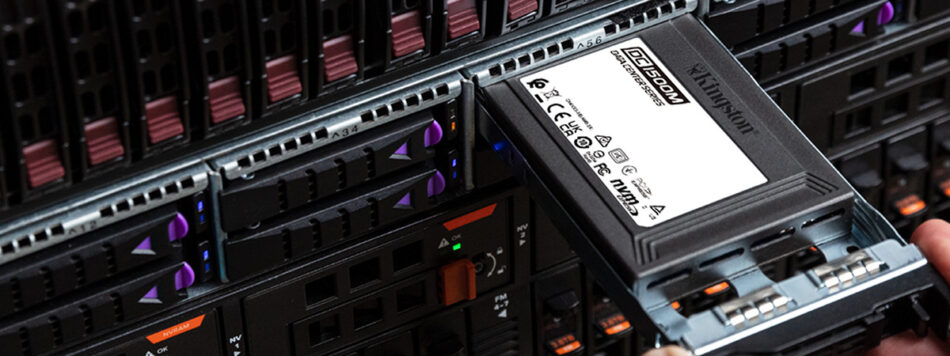Choosing the right storage drive for your server isn’t just a matter of speed, it’s about performance, reliability, scalability, and cost. Whether you’re building a new server or upgrading an existing one, understanding your options can prevent future downtime, bottlenecks, or costly replacements.
This post explores how to match the right drive to your server’s needs and what to consider before making a decision.
Identifying the Type of Workload
Start by assessing the server’s workload. Drives serve different purposes depending on how your server operates:
- Transactional Workloads: Databases or financial systems that need fast input/output operations.
- Read-Heavy Workloads: Media servers or content delivery networks where data is frequently accessed but not heavily written.
- Write-Intensive Workloads: Logging systems or video capture servers that continuously write data.
- Mixed Workloads: Virtual environments or cloud-based services that demand balanced performance.
Knowing your server’s workload helps determine the type of drive best suited for performance and endurance.
Comparing HDDs and SSDs in Server Environments
While hard disk drives (HDDs) offer high storage capacities at a lower cost, they fall short in performance compared to solid-state drives (SSDs). SSDs are significantly faster, more durable, and better suited for always-on enterprise environments.
For workloads that require low latency and consistent performance, sas solid state drives are a strong choice. These drives are designed for enterprise applications and outperform SATA SSDs in speed, error correction, and endurance.
SAS drives also support dual-port capabilities, making them ideal for high-availability setups in data centers.
Choosing Between SATA, SAS, and NVMe
Interface types are a key consideration when choosing a server drive:
- SATA (Serial ATA): Affordable, but slower and less reliable under heavy workloads.
- SAS (Serial Attached SCSI): Faster than SATA, with better error correction and redundancy options.
- NVMe (Non-Volatile Memory Express): The fastest option, using PCIe lanes for maximum throughput, suitable for high-demand tasks like real-time analytics or AI processing.
For many server applications, SAS SSDs offer the ideal middle ground: reliable, scalable, and more budget-friendly than NVMe while still delivering enterprise-level performance.
Understanding Capacity and Endurance
Server workloads often stress storage systems over long periods. That makes endurance a critical factor when choosing a drive. Endurance is typically measured in DWPD (Drive Writes Per Day), which reflects how much data a drive can write every day over its warranty period.
If your server handles frequent or large write operations, a drive with high endurance is essential. At the same time, consider capacity needs not just for today but also for the near future.
Drives like 2.5″ Enterprise SAS Solid State Drives are specifically engineered for durability and heavy workloads. They offer advanced features such as power-loss protection and improved thermal handling key for maintaining uptime in critical systems.
Evaluating Drive Reliability and Uptime
Enterprise servers run 24/7, so the drives must match that level of reliability. Look for drives with high MTBF (Mean Time Between Failures) ratings and firmware optimized for server use.
SAS SSDs are particularly well-known for their reliability, with better error handling and failover support than consumer-grade drives. This can significantly reduce the risk of unexpected outages.
If uptime is essential to your business operations, investing in enterprise-class drives with built-in health monitoring features is a smart move.
Compatibility and Cost Considerations
Drive form factor and interface compatibility matter. The 2.5” form factor is common in enterprise environments and supported by most server configurations. Before buying, confirm that your server supports the interface type whether SATA, SAS, or NVMe and ensure your power and cooling infrastructure can handle it.
The budget is also important. While NVMe drives offer blazing speed, they may be overkill for many use cases. SAS SSDs, on the other hand, provide a better balance of cost and performance especially in mixed or moderately demanding environments.
Choosing the right drive means balancing your performance requirements with long-term reliability and operational cost.
When Drive Performance Impacts the Business
In many cases, the performance of a server’s storage system directly affects productivity and user experience. A fast CPU and plenty of RAM won’t matter if the drive becomes a bottleneck.
If your infrastructure supports customer-facing services, real-time databases, or virtual environments, storage performance is not just a technical concern, it’s a business one. That’s why carefully choosing the right drive pays off in the long run.
Conclusion
Choosing the right server drive isn’t just a matter of specs, it’s about aligning storage with actual workload demands. Drives need to be fast, reliable, and durable enough to handle enterprise-level use.
For professionals looking to upgrade server performance or build a reliable storage setup, exploring high-quality options from trusted sources like Cloud Ninjas is a solid next step. Their expertise and selection of enterprise storage solutions can help ensure your servers perform at their best without compromising on reliability.






